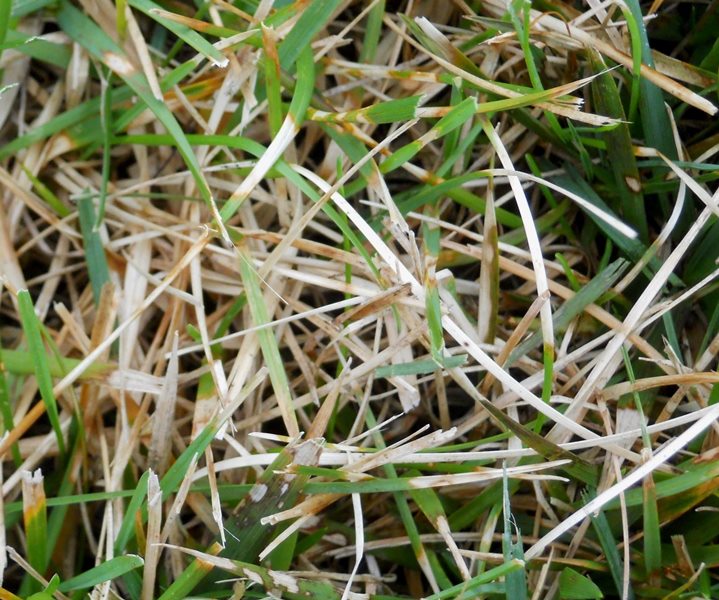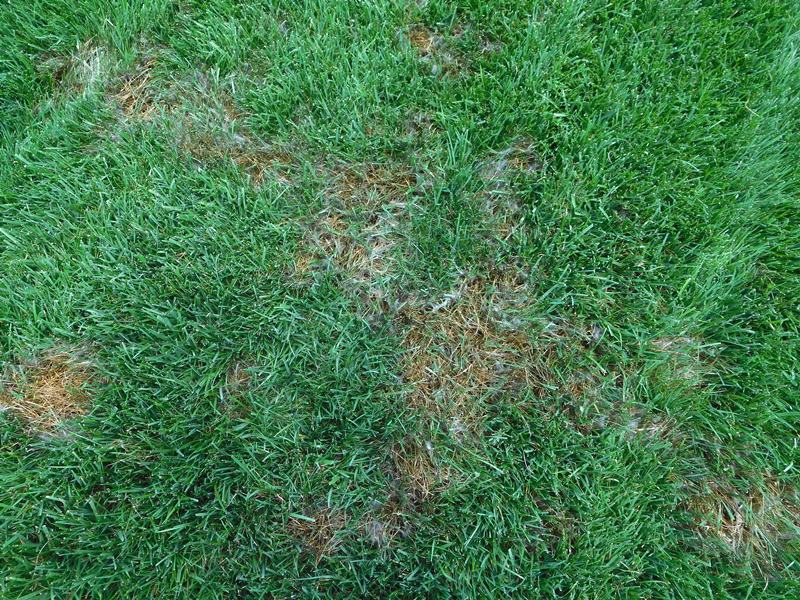
Peter H. Dernoeden, Ph. D.
Breeders have been busy developing darker green, finer textured and denser tall fescue cultivars. Most improved cultivars, however, are quite susceptible to dollar spot, red thread and Pythium blight. Brown patch, the “Achilles Heel” of tall fescue remains a major problem. Diseases in tall fescue tend to be most severe during the first 2 to 3 years following establishment. In time, however, tall fescue stands eventually lose some density, become a little more course textured, and stabilize in terms of summer stress and disease tolerance. Interestingly, mixing tall fescue with about 5% Kentucky bluegrass significantly reduces problems with brown patch and possibly Pythium blight.
July brought on some terrific bouts with dollar spot, brown patch and Pythium blight in tall fescue. The advent of high night temperatures, high humidity and thunderstorms in early July brought on severe disease pressure for some. Blighting caused by brown patch and Pythium blight fungi normally is most intense in water drainage patterns as well as where air circulation is restricted by trees and shrubs, buildings, fences and other obstructions (i.e., poor growing environs). Dollar spot generally is more common in sunny areas. All of the aforementioned, however, can develop under diverse conditions.
Dollar spot first appeared in late May, but it has a habit of coming and going throughout the growing season –even into early December in our region. Dollar spot appears in white or tan colored spots 1 to 3” in diam. and spots can coalesce to damage large areas. On infected tall fescue leaves you may find hour-glass-shaped lesions, but more often there is a bleached-white tip dieback and smaller oblong, paper-white lesions with brown borders. Following a warm and humid night, whitish mycelium (i.e., the cottony body of fungi) of the dollar spot fungus can be seen on leaves in early morning hours. The pathogen often kills large numbers of leaves and even tillers, disfiguring turf for long periods of time. In the autumn, plants produce new shoots from buds on stems bases and density can be recovered via the proper use of nitrogen fertilizer.




Pythium blight is less common than brown patch, but is a growing tall fescue problem, especially in lawns and roughs that are less than 2 or 3 years old. Unlike brown patch and dollar spot, Pythium blight often kills turf overnight. Pythium blight first appears as orange or bronzed-colored spots, which mimic the kind of damage that comes with gasoline spills. Spots increase to about 6” in diam. and coalesce quickly. During morning hours you may see mycelium, which appears grayish-white, and “frothy or cottony” within the canopy. Entire leaves turn brown, shrivel, and die by late morning. There are no distinctive leaf lesions, but recently collapsed leaves may have a soapy feel. Pythium blight is especially common in surface water drainage patterns and where air movement is restricted by shrubs, trees, fences and buildings.


 Dr. Pete's Turf Tips
Dr. Pete's Turf Tips